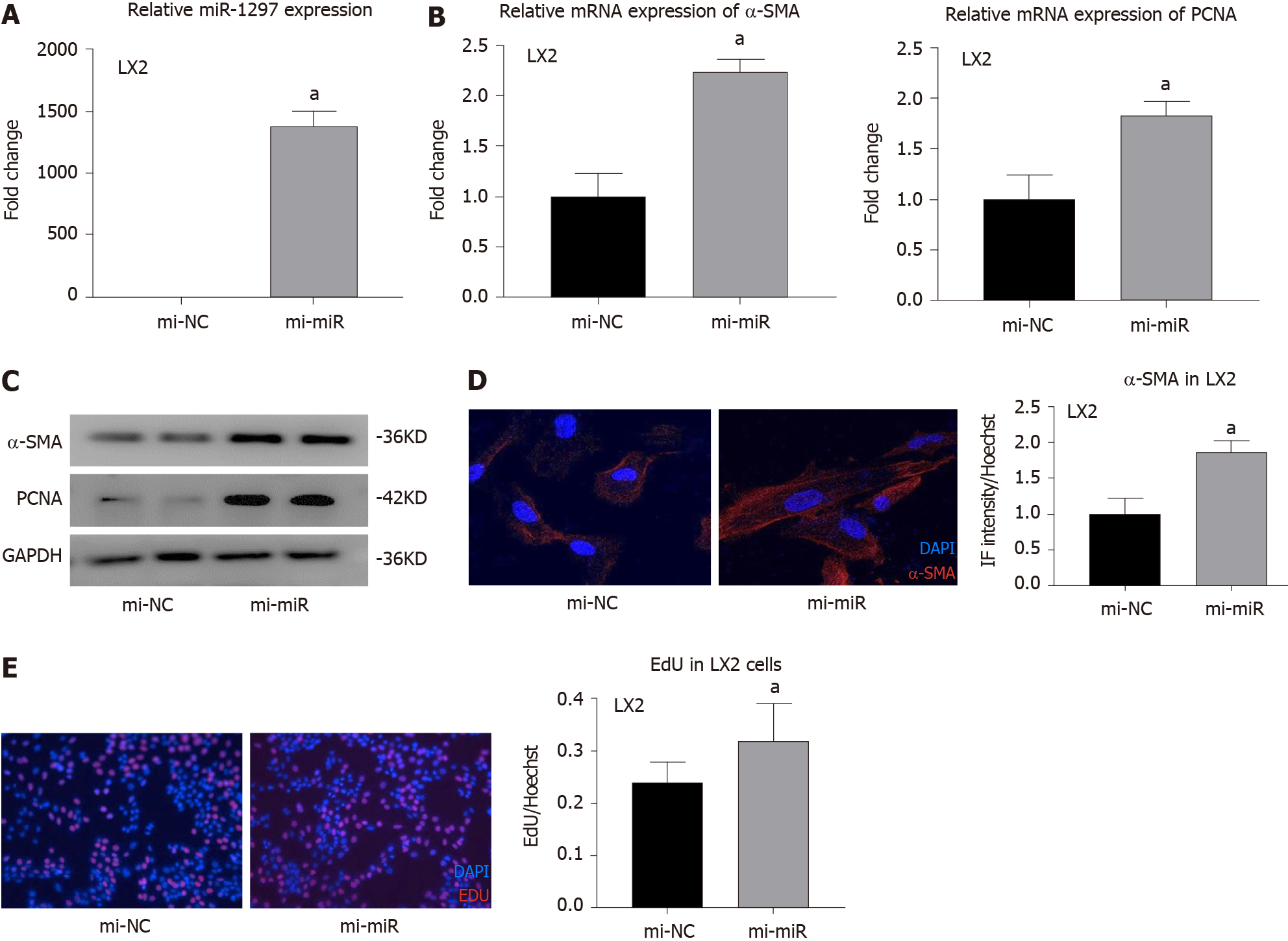Copyright
©The Author(s) 2021.
World J Gastroenterol. Apr 14, 2021; 27(14): 1419-1434
Published online Apr 14, 2021. doi: 10.3748/wjg.v27.i14.1419
Published online Apr 14, 2021. doi: 10.3748/wjg.v27.i14.1419
Figure 4 MicroR-1297 promoted hepatic stellate cell activation and proliferation by targeting the PTEN signaling pathway.
A: The transfection efficiency of 50 nM miR-1297 mimics in LX2 cells was assessed by quantitative real-time PCR. microRNA mimics of negative controls (mi-NC): 1.00 ± 0.12 vs miR-1297 mimics (mi-miR): 1380.25 ± 121.16; B: Relative mRNA expression of α-SMA (the activation marker of hepatic stellate cells) and PCNA (the proliferation marker of hepatic stellate cells) were assessed by quantitative real-time PCR. α-SMA: mi-NC: 1.00 ± 0.23 vs mi-miR: 2.24 ± 0.12; PCNA: mi-NC: 1.00 ± 0.25 vs mi-miR: 1.83 ± 0.14; C: Relative protein expression of α-SMA, PCNA, PTEN, PI3K, AKT and p-AKT were assessed by western blot after treatment of 50 nmol/L miR-1297 mimics for 48 h; D: Immunofluorescence staining of α-SMA was performed to evaluate the activation of LX2 cells after 50 nmol/L miR-1297 mimics for 48 h. mi-NC: 1.00 ± 0.22 vs mi-miR: 1.87 ± 0.15, Bar = 200 μm; E: Ethynyl-20-deoxyuridine test was performed to evaluate the proliferation of LX2 cells after 50 nmol/L miR-1297 mimics for 48 h. mi-NC: 0.24 ± 0.04 vs mi-miR: 0.32 ± 0.07, Bar = 50 μm. Statistical significance, aP < 0.05. DAPI: 4’6-Diamidino-2-phenylindole; EdU: Ethynyl-20-deoxyuridine.
- Citation: Luo X, Luo SZ, Xu ZX, Zhou C, Li ZH, Zhou XY, Xu MY. Lipotoxic hepatocyte-derived exosomal miR-1297 promotes hepatic stellate cell activation through the PTEN signaling pathway in metabolic-associated fatty liver disease. World J Gastroenterol 2021; 27(14): 1419-1434
- URL: https://www.wjgnet.com/1007-9327/full/v27/i14/1419.htm
- DOI: https://dx.doi.org/10.3748/wjg.v27.i14.1419









